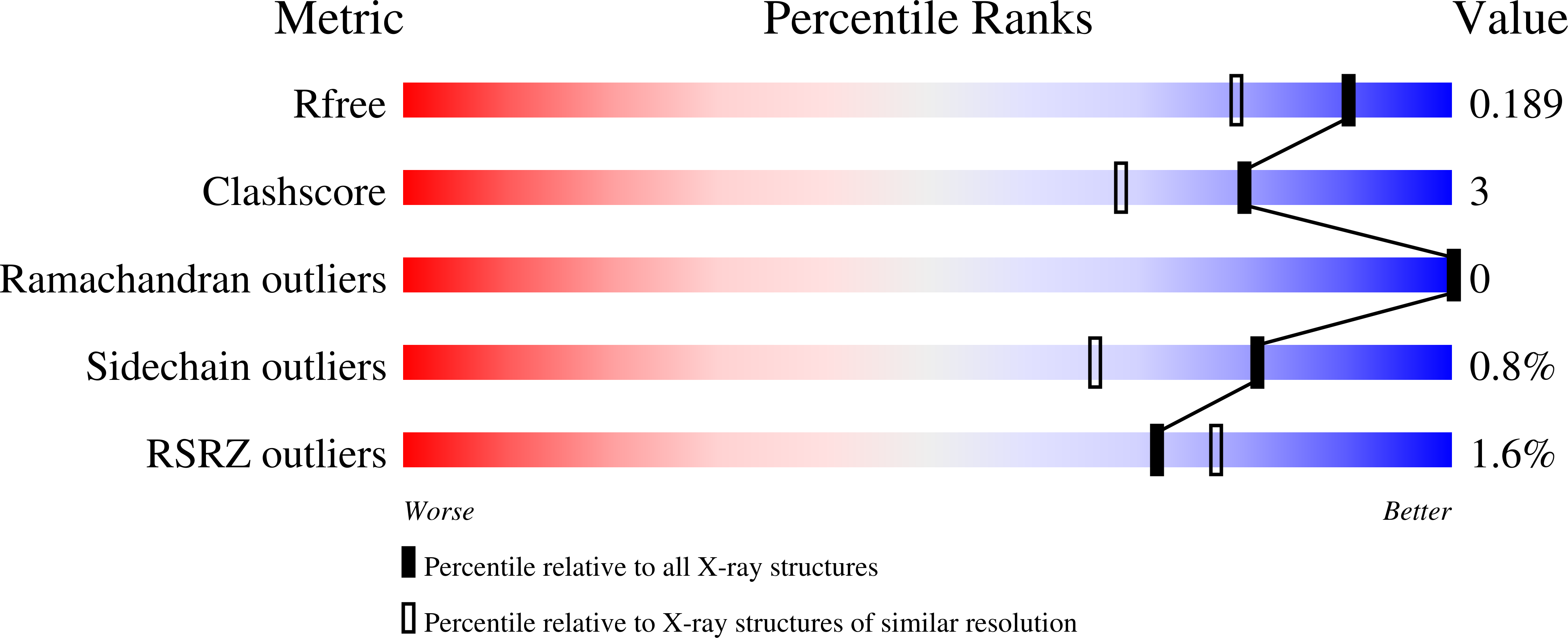A family of macrodomain proteins reverses cellular mono-ADP-ribosylation.
Jankevicius, G., Hassler, M., Golia, B., Rybin, V., Zacharias, M., Timinszky, G., Ladurner, A.G.(2013) Nat Struct Mol Biol 20: 508-514
- PubMed: 23474712
- DOI: https://doi.org/10.1038/nsmb.2523
- Primary Citation of Related Structures:
4IQY - PubMed Abstract:
ADP-ribosylation is a reversible post-translational modification with wide-ranging biological functions in all kingdoms of life. A variety of enzymes use NAD(+) to transfer either single or multiple ADP-ribose (ADPr) moieties onto distinct amino acid substrates, often in response to DNA damage or other stresses. Poly-ADPr-glycohydrolase readily reverses poly-ADP-ribosylation induced by the DNA-damage sensor PARP1 and other enzymes, but it does not remove the most proximal ADPr linked to the target amino acid. Searches for enzymes capable of fully reversing cellular mono-ADP-ribosylation back to the unmodified state have proved elusive, which leaves a gap in the understanding of this modification. Here, we identify a family of macrodomain enzymes present in viruses, yeast and animals that reverse cellular ADP-ribosylation by acting on mono-ADP-ribosylated substrates. Our discoveries establish the complete reversibility of PARP-catalyzed cellular ADP-ribosylation as a regulatory modification.
Organizational Affiliation:
Butenandt Institute of Physiological Chemistry, Ludwig Maximilians University of Munich, Munich, Germany.



















